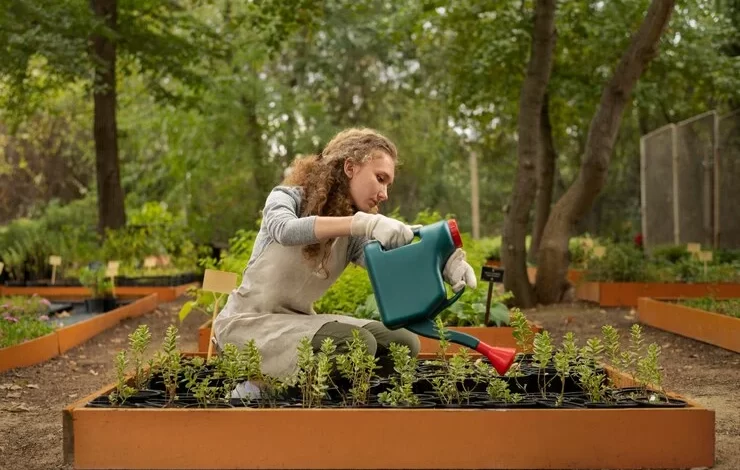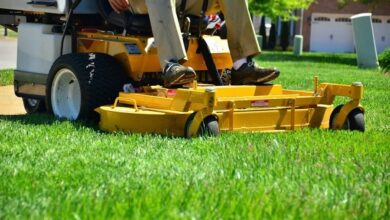How to Start Vegetable Garden in Your Backyard

Have you ever dreamed of biting into a crisp, freshly picked cucumber or enjoying the sweetness of a sun-ripened tomato straight from your own garden? Starting a vegetable garden is an exciting and fulfilling adventure that anyone can embark on. In this article, we’ll explore the ins and outs of how to start vegetable garden, providing you with all the knowledge you need to transform your backyard into a vibrant and productive space. So, get your gardening gloves ready, and let’s dig in!
Key Takeaways
- Starting a vegetable garden is a rewarding hobby that provides fresh produce and improves your physical and mental health.
- Choosing the right location, planning your garden layout, and preparing the soil are essential first steps.
- Selecting the right vegetables, planting at the right time, and providing adequate water and care are key to a successful garden.
- Regular maintenance, including weeding, fertilizing, and pest control, ensures a healthy and vibrant garden.
- Extending your growing season with cold frames, row covers, or a greenhouse can increase your harvest and enjoyment.
Choosing the Perfect Spot: Sunlight, Drainage, and Accessibility
The first step in starting your vegetable garden is selecting the ideal location. This decision will impact the success and health of your plants, so consider the following factors:
- Sunlight: Most vegetables crave sunlight and require at least 6-8 hours of direct sunlight per day. Choose a spot in your yard that receives ample sunlight, preferably facing south or west.
- Drainage: Ensure the area has good drainage to prevent waterlogging. Avoid low-lying areas or spots with heavy, clay-based soil for your vegetable garden. If necessary, consider using raised beds to improve drainage.
- Accessibility: Pick a spot that’s convenient and close to a water source. You’ll need easy access for regular maintenance, watering, and harvesting.
- Protection: Strong winds can damage plants, so avoid exposed areas. If needed, use windbreaks or plant taller crops to shield more delicate vegetables in your garden.
Planning Your Garden Layout: Size, Rotation, and Companion Planting
Before you start digging, it’s essential to plan your garden layout. Consider the following factors to ensure a functional and productive garden:
- Garden Size: Start small, especially if you’re a beginner. A 10×10-foot plot or a few raised beds are more manageable and less overwhelming.
- Crop Rotation: Rotate your crops annually to prevent the buildup of pests and diseases and to maintain soil fertility. This helps ensure your vegetables stay healthy and happy.
- Companion Planting: Certain plants benefit from being grown together, such as tomatoes and basil. Marigolds, for example, can help deter pests when planted alongside vegetables.
- Vertical Gardening: Save space and make harvesting easier by using trellises, cages, or stakes for vining crops like cucumbers or pole beans.
Preparing the Soil: The Foundation of a Successful Garden
Healthy soil is the secret to a thriving vegetable garden. Here’s how to prepare your soil for optimal plant growth:
- Test Your Soil: Start by testing your soil’s pH and nutrient levels. This will guide you in amending the soil to create the perfect environment for your vegetables.
- Add Organic Matter: Boost your soil’s structure and fertility by incorporating plenty of organic matter, such as compost or well-rotted manure. This will ensure your plants have the nutrients they need.
- Till or Dig: Loosen the soil to a depth of 8-12 inches using a tiller or spade when preparing to grow vegetables. This allows plant roots to penetrate easily and access the added nutrients.
- Raised Beds: If you opt for raised beds, fill them with a high-quality potting mix or a blend of compost, topsoil, and vermiculite for optimal drainage and nutrient retention.
Selecting the Best Vegetables for Your Garden
Now for the fun part—choosing which vegetables to grow! This is where your personal preferences come into play. Consider the following factors to ensure a delicious and diverse harvest:
- Growing Season: Different vegetables thrive in specific seasons. For spring and fall, choose cool-season crops like lettuce, kale, and broccoli for your vegetable garden. For summer, opt for warm-season crops like tomatoes, peppers, and squash.
- Ease of Growing: If you’re a beginner, start with easy-to-grow vegetables such as tomatoes, zucchini, beans, and carrots. These crops are more forgiving and will boost your confidence as you start a vegetable garden.
- Space Requirements for your vegetable garden: Pay attention to the mature size of each plant and allow enough space for them to spread their roots and grow. Some vegetables, like squash, need more room to roam.
- Succession Planting in the garden: To extend your harvest season, sow seeds or transplant seedlings at intervals. This ensures a continuous supply of fresh veggies throughout the growing season.
Planting Your Vegetable Garden: Timing, Depth, and Care
Once you’ve chosen your vegetables to grow, it’s time to get planting! Follow these steps to start vegetable garden successfully:
- Timing: Plant seeds or seedlings at the right time based on your growing zone and the crop’s requirements. Each vegetable has its own ideal planting window, so be sure to check seed packets or plant tags.
- Depth and Spacing: Refer to the instructions on the seed packet or plant tag for proper depth and spacing. Correct planting depth is crucial for germination in a vegetable garden, and proper spacing prevents overcrowding.
- Watering: After planting, water gently to settle the soil around your seeds or seedlings. Maintain regular watering to promote healthy root development.
- Mulching: Apply a 2-4 inch layer of organic mulch, such as straw or shredded leaves, to retain moisture, suppress weeds, and keep your garden looking neat and tidy.
Maintaining Your Garden: Watering, Weeding, and Pest Control
Regular maintenance is the key to a thriving vegetable garden. Here are some essential tasks to keep your garden in tip-top shape:
- Watering: Water your garden regularly, aiming for about 1 inch of water per week. Adjust your watering schedule based on weather conditions and the specific needs of your plants.
- Weeding: Weeds compete with your vegetables for nutrients and water, so remove them regularly. A thorough weeding session every week or two will keep them at bay.
- Fertilizing your garden: Vegetables are heavy feeders, so replenish the soil’s nutrients every 4-6 weeks with a balanced, organic fertilizer. This will keep your plants strong and healthy.
- Pest Control in the vegetable garden: Keep an eye out for pests and diseases. Use organic methods like hand-picking insects, introducing beneficial insects, or using row covers to protect your plants.
- Harvesting: Harvest your vegetables at their peak ripeness for the best flavor and nutrition. Regular harvesting also encourages continued production.
Extending Your Growing Season: Cold Frames, Row Covers, and Greenhouses
If you’re eager to maximize your harvest and grow even more vegetables, consider these techniques to extend your growing season:
- Cold Frames: Protect your plants from frost and extend the growing season in spring and fall by using cold frames or cloches. These structures provide a cozy environment for your crops.
- Row Covers: Lightweight row covers offer protection from pests and cold temperatures. They’re an easy and affordable way to give your plants a little extra warmth.
- Greenhouses can be an excellent addition to your garden: Invest in a small greenhouse or hoop house to create a controlled environment for growing heat-loving crops or starting seedlings early in the season.
- Succession Planting: By planting seeds or transplanting seedlings at intervals, you can have a continuous harvest and enjoy fresh veggies all season long in your vegetable garden.
Conclusion
Starting vegetable garden is an incredibly rewarding experience that not only provides you with fresh, nutritious produce but also improves your physical and mental health. By following the steps outlined in this guide, you’ll be well on your way to creating a vibrant and bountiful garden. Remember to start small, choose the right location, prepare your soil carefully, and maintain your garden regularly. With a bit of planning and dedication, you’ll soon be enjoying the fruits (and vegetables!) of your labor. Happy gardening!
Now that you’ve gained the knowledge, it’s time to get your hands dirty! Start planning your vegetable garden today and embark on a rewarding journey of growth and delicious harvests. Stay tuned for more gardening tips and tricks to help you become a master gardener!



